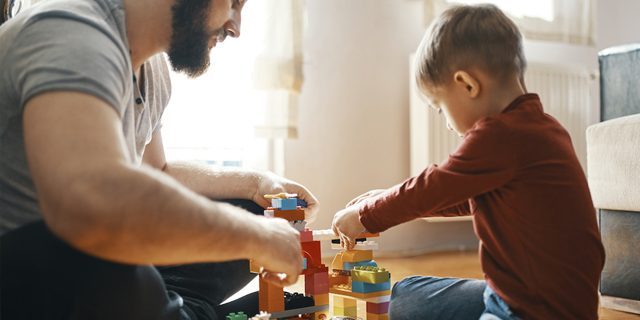Pediatricians have found that the best toys for kids’ healthy development are the exact opposite of trendy and expensive
Just in time for the holidays, the American Association of Pediatricians (AAP) has released an updated report about the best toys for childhood development – and there’s nary a screen or battery to be seen in their recommendations.
Stating that “the best toys go back to the basics,” the updated guidelines for pediatricians and families stress that although toy aisles are increasingly filled with blinking lights, soundtracks, and screens, the very best toys for learning are also the simplest toys: blocks, dolls, games, and balls.
“Toys have evolved over the years, and advertisements may leave parents with the impression that toys with a ‘virtual’ or digital-based platform are more educational,” Aleeya Healey, MD, FAAP, a lead author of the report, stated in an AAP press release. “Research tells us that the best toys need not be flashy or expensive or come with an app. Simple, in this case, really is better.”
When kids are young, they need toys that make them social and that encourage relationships. They also need toys that help their develop their language, their social skills, their physicality, and their problem solving. While simple toys like blocks, or a bat and ball, encourage all of these things, screens and digital toys can isolate kids and make them inactive.
“The best toys are those that support parents and children playing, pretending and interacting together,” said Alan Mendelsohn, MD, FAAP, co-author of the report and associate professor in the Departments of Pediatrics and Population Health at NYU Langone Health. “You just don’t reap the same rewards from a tablet or screen. And when children play with parents – the real magic happens, whether they are pretending with toy characters or building blocks or puzzles together.”
The report stresses repeatedly that even fancy, high-tech toys that are advertised as “educational” aren’t as good as basics playthings that promote communication and relationships, with parents, relatives, caregivers, and other kids.
“The more we know about early brain development, the more we understand the need for play that is based on human interaction,” Dr. Healey said. “There is no screen, video game or app that can replace the relationships built over toys.”
The report also mentions more specific tips for parents who are buying toys for their kids — and the pediatricians who are giving parents guidance during office visits. It advises avoiding overstimulating toys, toys that promote gender or race stereotypes, and toys that don’t foster human interaction. Instead, parents should look for toys that engender creativity, interpersonal play, and imaginative play.
Finally, they offer a list of traditional toys that promote the best types of developmental play, including: dolls and action figures, pretend cooking/food toys, toy cars, blocks, puzzles, trains, art supplies, card games, board games, toy letters, bikes, trikes, balls, and push and pull toys.
Examples of modern toys that don’t promote development include: tablets, screens, electronic games, phones, laptops, toys with lights and sounds — and any toy that substitutes a human interaction, such as a bear that reads a story.
The document adds that simple toys, like blocks, grow along with a child’s development. While a toddler might simply stack blocks, older kids can build worlds with them.
The report finally reminds parents of current guidelines that kids under two shouldn’t be watching screens at all, and kids over two should watch less than an hour a day. Even then, they should watch with adult supervision/interaction, and programming that is educational and age-appropriate.
You can read the clinical report in its entirety here.




